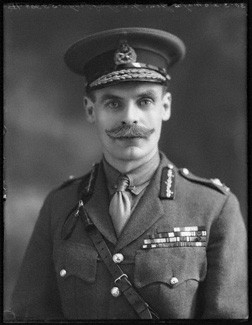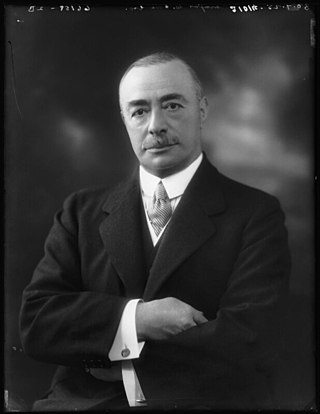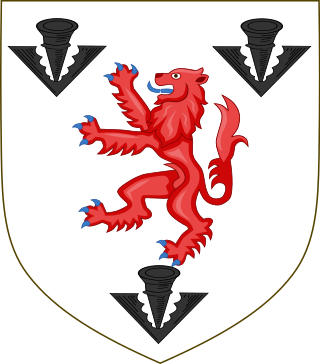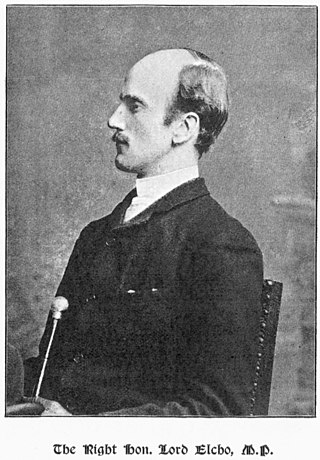Related Research Articles

Earl of Rothes is a title in the Peerage of Scotland. It was created in 1458 for George Leslie, 1st Lord Leslie. He had already been created Lord Leslie in 1445, also in the Peerage of Scotland. His grandson, the third Earl, having only succeeded his elder brother in March 1513, was killed at the Battle of Flodden on 9 September of the same year. His son, the fourth Earl, served as an Extraordinary Lord of Session. Lord Rothes was also tried for the murder of Cardinal Beaton but was acquitted.

Brigadier-General Paul Aloysius Kenna, VC, DSO was an English-born British Army officer of Irish descent and recipient of the Victoria Cross (VC), the highest and most prestigious award for gallantry in the face of the enemy that could be awarded to British and British Empire forces. He also competed at the 1912 Summer Olympics.

George Darell Jeffreys, 1st Baron Jeffreys, was a British Army officer and Conservative Member of Parliament.
(Christopher) Richard Sandford Buckle CBE, was a lifelong English devotee of ballet, and a well-known ballet critic. He founded the magazine Ballet in 1939.

William Cope, 1st Baron Cope,, known as Sir William Cope, Bt, between 1928 and 1945, was a Welsh Conservative Party politician, who was also notable as an international rugby union player for Wales. He was Member of Parliament for Llandaff and Barry from 1918 to 1929, was made a baronet in 1928 and elevated to the peerage as Baron Cope in July 1945.

Colonel Sir Donald Walter Cameron of Lochiel, was a British Army officer of the Queen's Own Cameron Highlanders and the 25th Chief of Clan Cameron.

Francis Charles Granville Egerton, 3rd Earl of Ellesmere VD, DL, JP, styled Viscount Brackley between 1857 and 1862, was a British peer, soldier and author from the Egerton family. He owned several racehorses and 13,300 acres (54 km2) land.
Sir Samuel Barber Strang Steel of Philiphaugh, 1st Baronet, Territorial Decoration was a landowner and Conservative Party politician in the United Kingdom. He was Member of Parliament (MP) for Ashford from 1918 to 1929.

Hugo Richard Charteris, 11th Earl of Wemyss and 7th Earl of March DL, styled Lord Elcho from 1883 to 1914, was a British Conservative politician.
Sir Thomas Fowell Victor Buxton, 4th Baronet, JP was a British aristocrat and philanthropist.
Peter Stafford Hayden Lawrence was a master at Eton College and The Doon School, India and an author. He was, until his death, the last surviving master at Eton to have served in the Second World War.
David Davies, 3rd Baron Davies,, was a British hereditary peer and engineer.
Charles Edward Wilson was an England rugby international and British Army officer who was killed during the First World War.
Rab Brougham Bruce Lockhart was a Scottish soldier and schoolmaster, notable for his sporting career as a Scotland international at rugby union and as a member of the Scotland national cricket team. He became headmaster of Wanganui Collegiate School in New Zealand and later of Loretto School in Scotland.
Colonel William Vere Reeve King-Fane was an English local politician, magistrate and landowner, who served as vice-chairman of Kesteven County Council and High Sheriff of Lincolnshire.

Sir Henry Jacob Preston, 3rd Baronet was an English soldier, magistrate and footballer. He represented England in the second representative football match against Scotland in November 1870.
Bentley Lyonel John Tollemache, 3rd Baron Tollemache, DL, JP was a British Army officer, peer and writer on croquet and bridge.

Sir John Christopher Willoughby, 5th Baronet DSO was a British army officer, Justice of the Peace for Oxfordshire, and landowner of properties in Oxfordshire and Buckinghamshire.
Major-General Sir Steuart Welwood Hare, was a British Army officer.

Henry Bligh Fortescue Parnell, 5th Baron Congleton was an Anglo-Irish soldier and aristocrat of the British peerage. At the age of 24, he was killed in action in the Ypres Salient, becoming the second British parliamentarian to die on the front line during the First World War.
References
- 1 2 "Lawrence, Henry Arnold (LWRN866HA)". A Cambridge Alumni Database. University of Cambridge.
- 1 2 3 "Obituary". The Times. No. 36748. London. 22 April 1902. p. 10.
- ↑ Mosley, Charles, editor. Burke's peerage, Baronetage, 7 Knightage, 107th Edition, 3 volumes. Wilmington, Delaware, USA: Burke's Peerage (Genealogical Books) LTD, 2003.
- ↑ "Second Lieutenant Christopher Hal Lawrence". iwm.org.uk. Archived from the original on 3 August 2019. Retrieved 28 November 2022.
- ↑ "Casualty Details | CWGC". Archived from the original on 3 August 2019. Retrieved 28 November 2022.
- ↑ "Casualty Details | Lieutenant Malcolm Lawrence". cwgc.org. Archived from the original on 3 August 2019. Retrieved 28 November 2022.
- ↑ "Imperial War Museum". iwm.org.uk. Retrieved 28 November 2022.